Tour de France tech: Looking through the magnifying glass
Custom mech hangers and BB weights, PRO integrated bar/stems
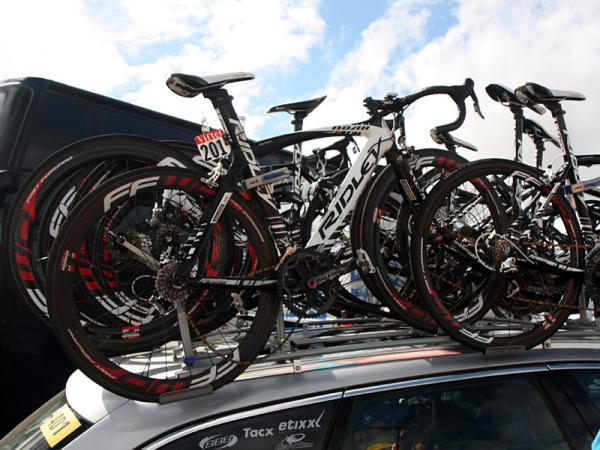
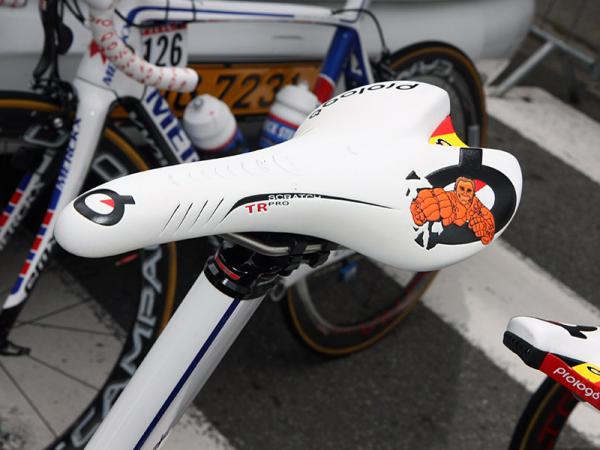
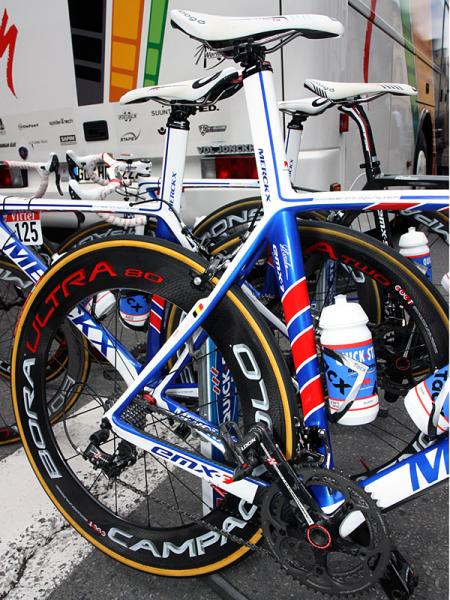
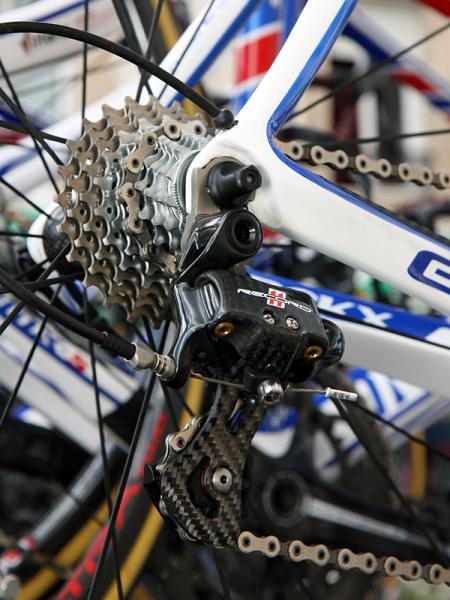
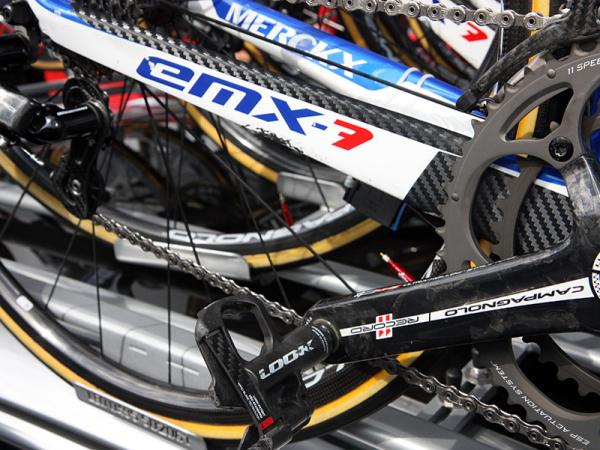
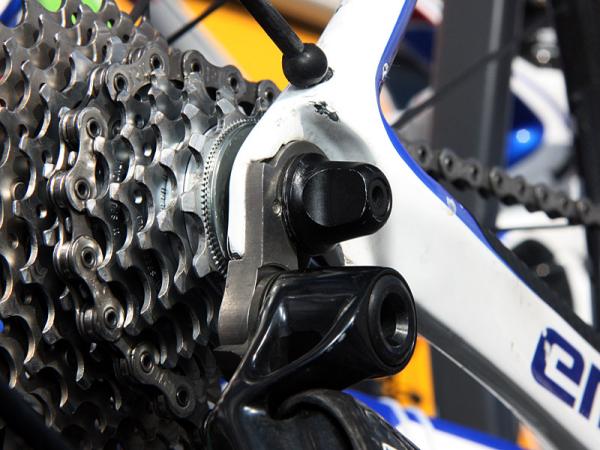
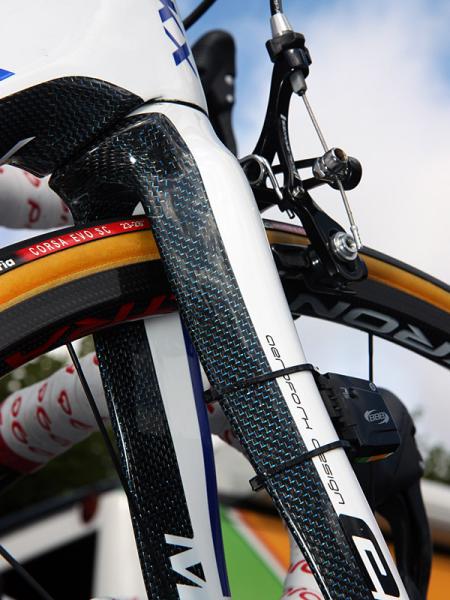
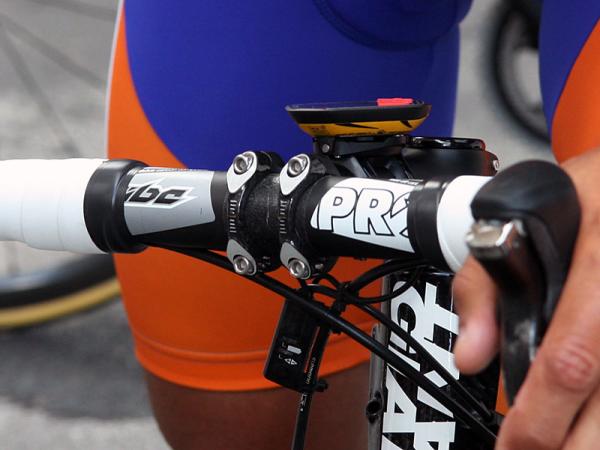
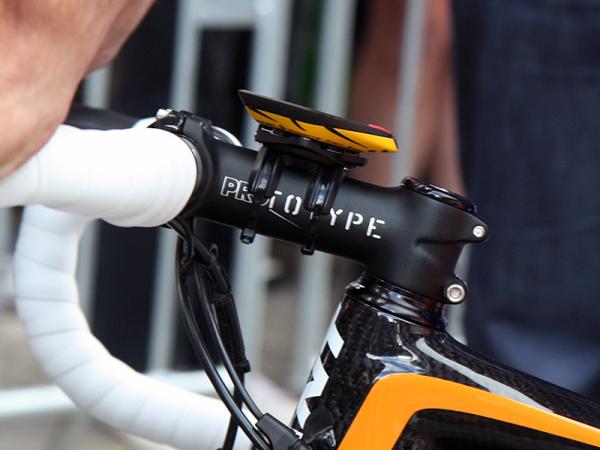
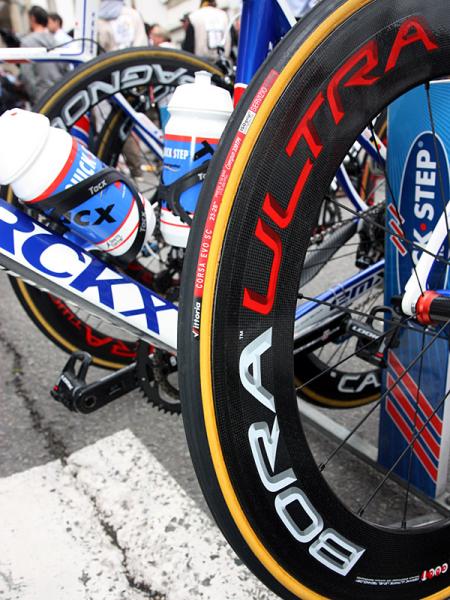
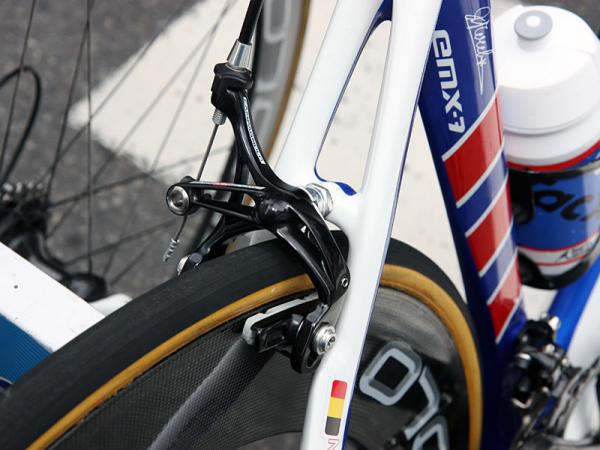
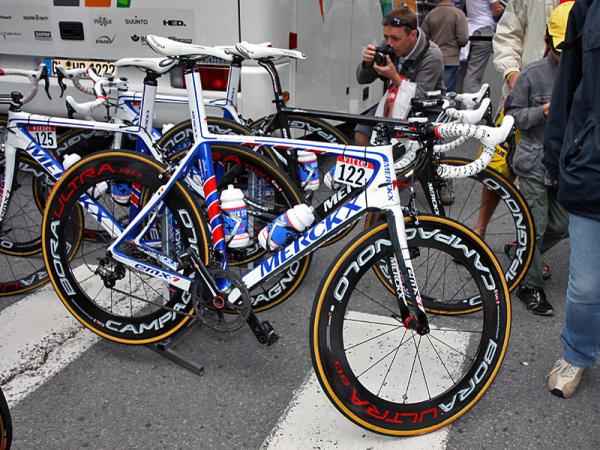
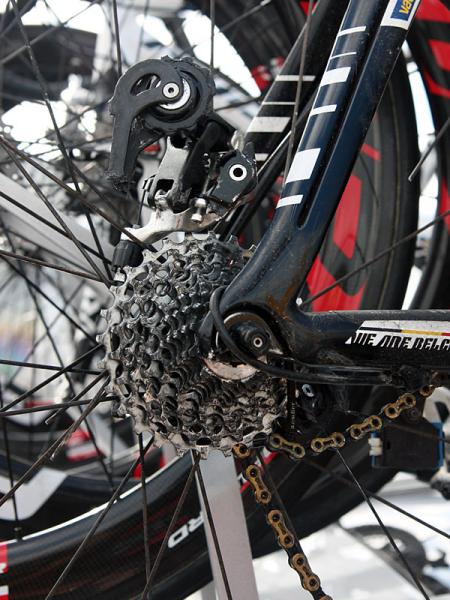
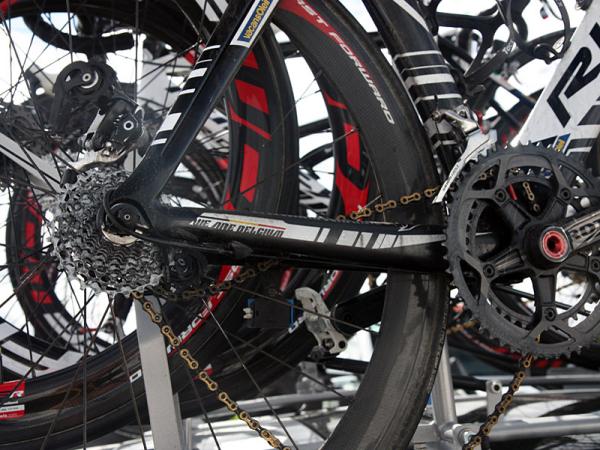
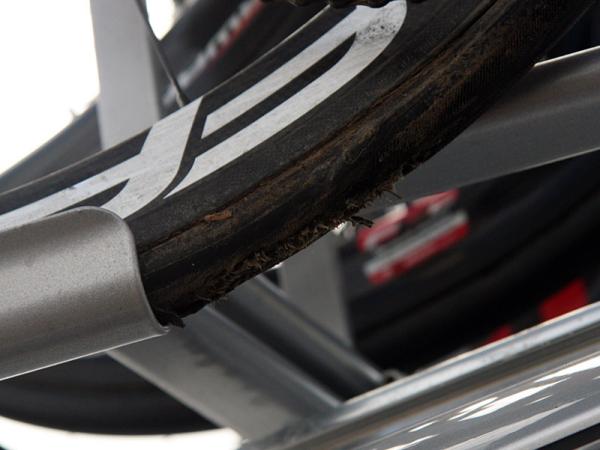
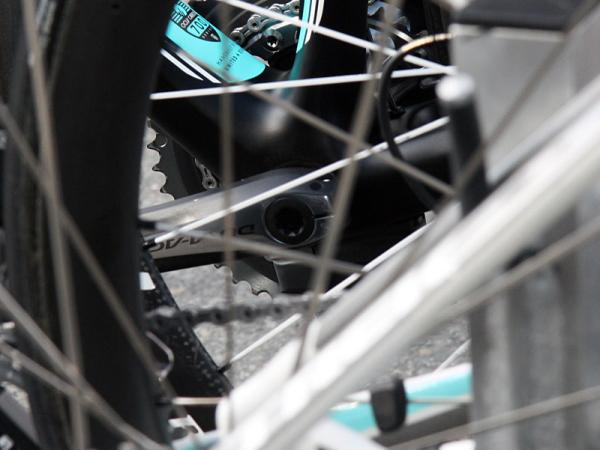
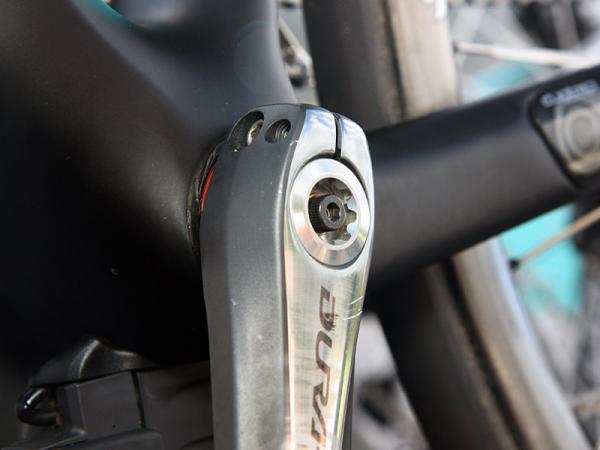
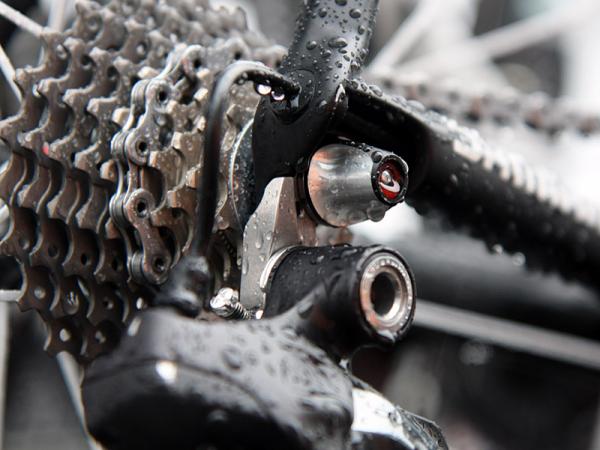
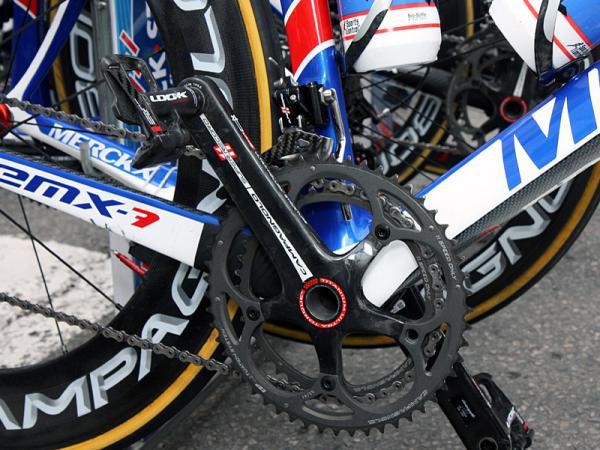
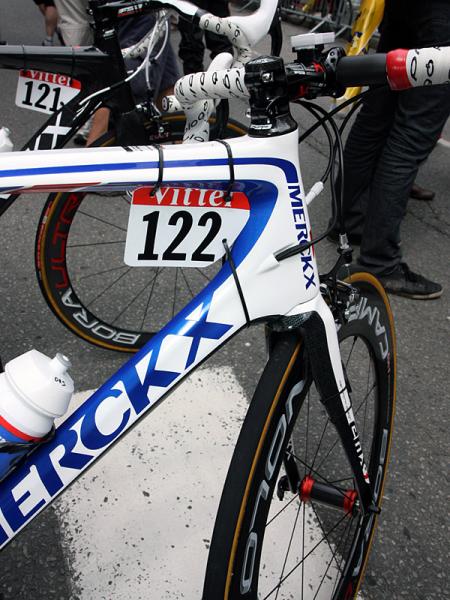
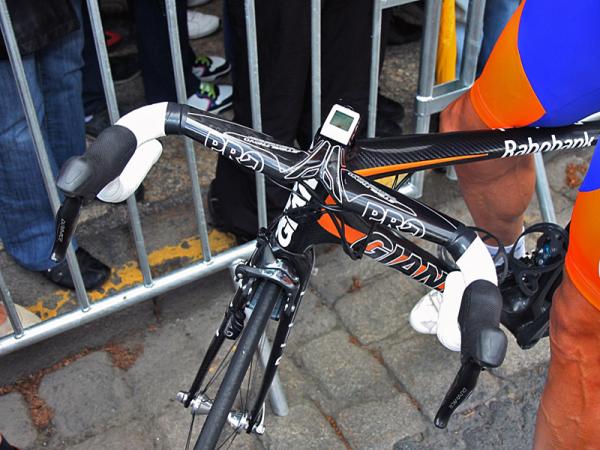
Gaining weight and stiffness in an unlikely location
Pro bike: Andy Schleck's Leopard Trek Trek Madone 6.9 SSL Tour de France
Pro Bike: Philippe Gilbert's Canyon Aeroad
Tour de France tech: Adjustable seatposts and funky graphics
Tour de France tech: A closer look at the Dogma2
Tour de France tech: New aero kit at team time trial
Tour de France tech: Custom aero bottles for Rabobank
Standard consumer road bikes are generally fitted with replaceable aluminum rear derailleur hangers that are, by definition, designed to bend or break in the event of an impact. For many pros at the Tour de France, however, those hangers are a little too soft so sponsors have taken to producing stiffer custom bits that are better able to contend with the rigors of day-to-day battle.
For example, Leopard Trek and Quick Step have machined stainless steel hangers on their respective Trek Madone 6.9 SSL and Eddy Merckx EMX-7 machines – we've also been told that Omega Pharma-Lotto runs special team-only hangers on its Canyon bikes, too. Interestingly, Trek-sponsored Team RadioShack looks to be running the standard aluminum hanger instead.
While the ferrous hangers are undoubtedly heavier, their enhanced durability is apparently worth the tradeoff – they're more likely to stay straight after a crash, they're more tolerant of rough handling (how many of you have tweaked a hanger doing seemingly nothing out of the ordinary?), and with today's tighter cassette cog spacing, they also yield better rear shifting performance not unlike the effect of a stiffer derailleur cage up front.

Quick Step are among the teams using custom stainless steel derailleur hangers for extra durability
They're also handy if a rider's bike is bumped from behind in the peloton since such an impact can still adversely affect the drivetrain even if he doesn't crash. At best, the chain will just skip over the cogs but at worst, the rear derailleur cage can move into the spokes when the rider is just trying to shift into the largest cog – a mechanical disaster that's virtually guaranteed to destroy the derailleur, hanger, chain, and oftentimes the wheel, too.
We're doubtful that manufacturers will begin offering steel hangers to consumers, though, as their dramatic jump in durability somewhat defeats their original purpose – acting as a sacrificial lamb to save the dropout. That being said, perhaps the folks at Wheels Manufacturing might consider tossing a few stainless steel billets into their CNC mills for limited production runs?
Get The Leadout Newsletter
The latest race content, interviews, features, reviews and expert buying guides, direct to your inbox!

This is often what happens when a rear derailleur ends up in the spokes. Would a stiffer hanger have prevented this? Perhaps
Leopard Trek's bottom bracket spindle weights
Remember those clever add-on weights we first showed you on Astana's bikes in 2009? They're back again but now they've been adapted by the Leopard Trek team for use in their Shimano-equipped Madone 6.9 SSLs.
Astana had it a little bit easier back then as the SRAM Red crankset spindles it was using at the time had open ends on the driveside that were readily accessible. Leopard Trek's Shimano Dura-Ace cranks are instead closed on both ends but the team has gotten creative and fastened the system to the removable bearing preload cap on the non-driveside. Once installed, all that's visible is the extra bolt head.
Leopard Trek didn't give us a firsthand demonstration as Astana did (though to be fair, we spotted it at the start of Stage 6 – hardly the time to pull a bike apart) but we can only assume the team is using a similar system of interchangeable wedges. Neat, simple, and secure.

Leopard Trek are using a custom add-on weight system on their Trek Madones when needed. The weights are inserted into the bottom bracket spindle where they have minimal effect on overall feel
New extra-oversized PRO prototype stems and integrated bars debut on Rabobank machines
Giant hinted that Rabobank team sponsor PRO would be introducing new 1 1/4in-diameter stems to go with the bigger OverDrive 2 front ends on the team's new TCR Advanced SL bikes and indeed, we spotted a new model at the start of Stage 6. Details are sparse but from inspection, the new stem looks to be made of forged aluminum with a two-bolt steerer clamp and a two-piece, four-bolt faceplate.
What we didn't expect, however, was a similarly oversized version of its sleek Stealth Evo integrated carbon cockpit, too.
This news might not excite riders who aren't currently on bikes with 1 1/4in steerer tubes but keep in mind that assuming Shimano has done its homework and equipped the stems with correspondingly larger-diameter extensions, there are torsional stiffness gains to be had on standard 1 1/8in-equipped bikes, too, with the appropriate shim.

One of Rabobank's new Giant TCR Advanced SL bikes was fitted with a new extra-oversized 1-1/4in version of PRO's Stealth Evo integrated carbon fiber stem and handlebar to go along with Giant's new OverDrive 2 steerer size
Anodized aluminum SRM Power Control 7 computers for Tour riders
Here's one we admittedly missed but thanks to Trek team liaison Matt Shriver (@TrekTeamMatt) for the tip/taunt. SRM has created special Power Control 7 head units in limited quantities for this year's Tour de France with color-anodized aluminum bodies instead of the usual matte-finish plastic ones.
According to SRM's Amy Creed, the company has even made a number of different color variants to suit the assortment of teams, too. Euskaltel-Euskadi captain Samuel Sanchez gets particularly special treatment, though – his is bright gold to match the other personalized bits on his custom Olympic-edition Orbea Orca.
This article originally appeared on BikeRadar